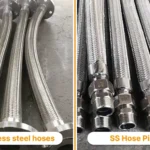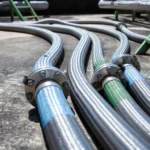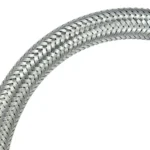Stainless Steel Hose VS SS Hose Pipe
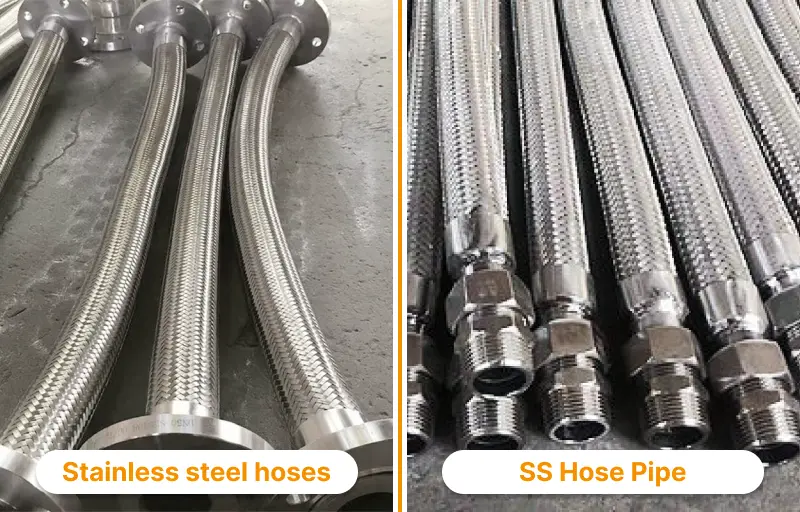
Hoses and pipes play a vital role in various industry applications to transfer fluids, gas, and chemicals. Choosing the correct type of equipment, whether it’s a stainless steel hose or a stainless steel hose pipe, is most important to ensure smooth functioning & long life. Both the types differ in their characteristics and applications. This article will guide you through the differences between stainless steel hoses and stainless steel hose pipes, helping you make an informed decision for your industrial needs.
What Are Stainless Steel Hoses?
Stainless steel hoses are flexible tubes made from stainless steel, designed to transfer fluids or gas in a variety of industrial applications. They are highly durable to handle high temperatures, pressure variations, and exposure to chemicals. Their flexibility makes them ideal for situations where rigid piping systems would be impractical, such as in areas with space constraints or systems that require frequent movement or adjustments.
Stainless hoses are commonly used in industries like chemical processing, oil refining, and power plants, where durability and flexibility are essential. These hoses come in a range of lengths, sizes, and designs, tailored to specific industrial needs such as water transfer, chemical transportation, and fuel transfer.
Send an inquiry for steel hoses?
Contact to our experts team to discussing requirements of ss hoses needed for your industries
What are Stainless Steel Hose Pipes?
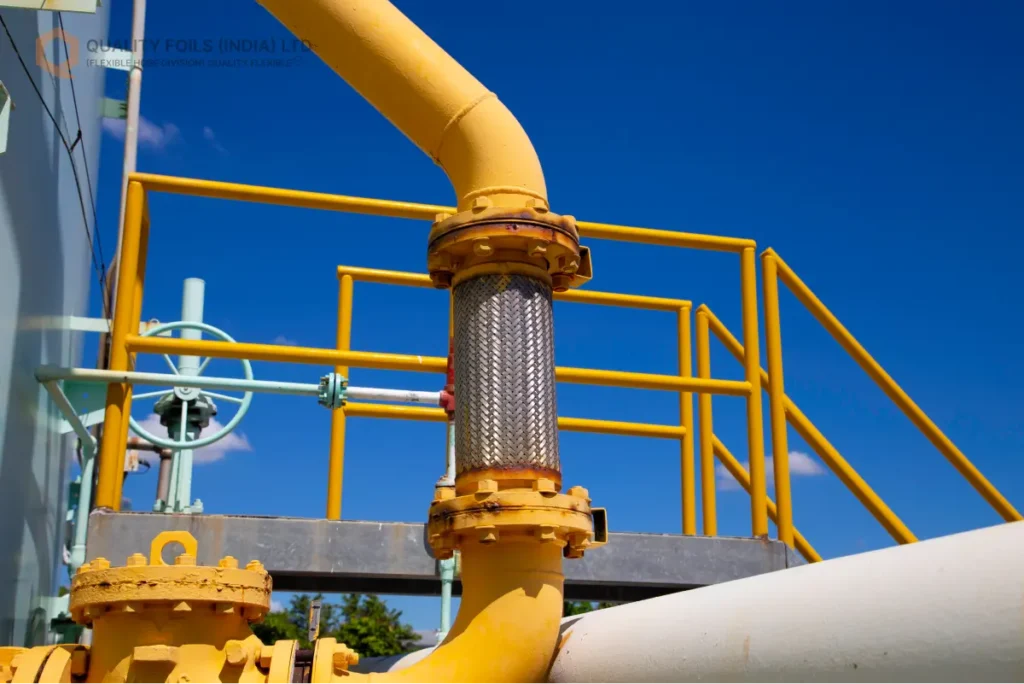
On the other hand, stainless steel hose pipes are tubular conduits that are more rigid and are typically used to transport liquids or gas in industrial systems. Unlike hoses, ss hose pipes are less flexible and are often set up with permanent connections, where the transportation of fluids occurs without frequent movement.
While steel hoses are flexible and ideal for dynamic setups, steel hose pipes are designed for stability and durability in long-term installations, such as plumbing systems, oil & gas pipelines, and industrial processes that require a rigid transfer line.
Differences Between SS Hoses & SS Hose Pipes
To better understand how ss hoses and ss hose pipes differ, here are some critical factors to consider:
- Flexibility
Stainless steel hoses are highly flexible, making them suitable for applications requiring frequent movement or adjustments. They can easily absorb vibrations, handle thermal expansion, and withstand pressure fluctuations. In contrast, steel hose pipes are rigid and used where flexibility is not a requirement but durability and robustness are. - Material Composition
Both stainless steel hoses and ss hose pipes are made from high-grade stainless steel, but their designs cater to different needs. Stainless hoses are often reinforced with additional layers to enhance their flexibility, while steel hose pipes are constructed to provide maximum durability and resistance to external factors like corrosion or abrasion. - Durability
Stainless steel hose pipes tend to last longer than hoses due to their robust construction. They can handle heavier loads and are suitable for high-pressure applications. However, stainless steel hoses are built to endure high temperatures and pressures as well, though they may require more frequent replacements due to wear and tear, especially in high-motion environments. - Application Areas
SS hoses are ideal for transporting materials like chemicals, water, or fuel in industries such as chemical processing, mining, and oil refining. In contrast, ss hose pipes are more commonly used in plumbing systems, HVAC systems, and industrial setups where a permanent, sturdy solution is required. - Cost
The cost of stainless steel hoses can be higher than steel hose pipes, especially when considering the need for more frequent replacements. However, the flexibility and versatility of hoses make them indispensable for specific industrial uses, even if the overall operational costs are slightly higher.
Choose Right Types for Your Industrial Application
Selecting between stainless steel hoses and stainless steel hose pipes depends largely on the specific requirements of your application. If your system requires flexibility, frequent movement, or is subject to high vibrations, stainless hoses are the ideal choice. However, for more static, long-term installations, steel hose pipes offer the durability and robustness necessary for efficient operations.
For industries that demand high-performance solutions, stainless steel hoses are often preferred for their ability to handle aggressive chemicals, extreme temperatures, and pressure variations. On the other hand, steel hose pipes excel in applications requiring less flexibility but higher structural integrity.
Conclusion
Understanding the differences between stainless steel hoses and stainless steel hose pipes is essential for ensuring the efficiency and longevity of your industrial systems. By considering factors like flexibility, durability, and application areas, you can make a well-informed choice that suits your specific industrial needs.
If you’re still unsure about which solution is best for your setup, reach out to our experts at QualityFlex. We provide a wide range of stainless hoses and steel hose pipes, each designed to meet the highest performance standards. Contact us today for guidance on choosing the right product for your industrial applications!




